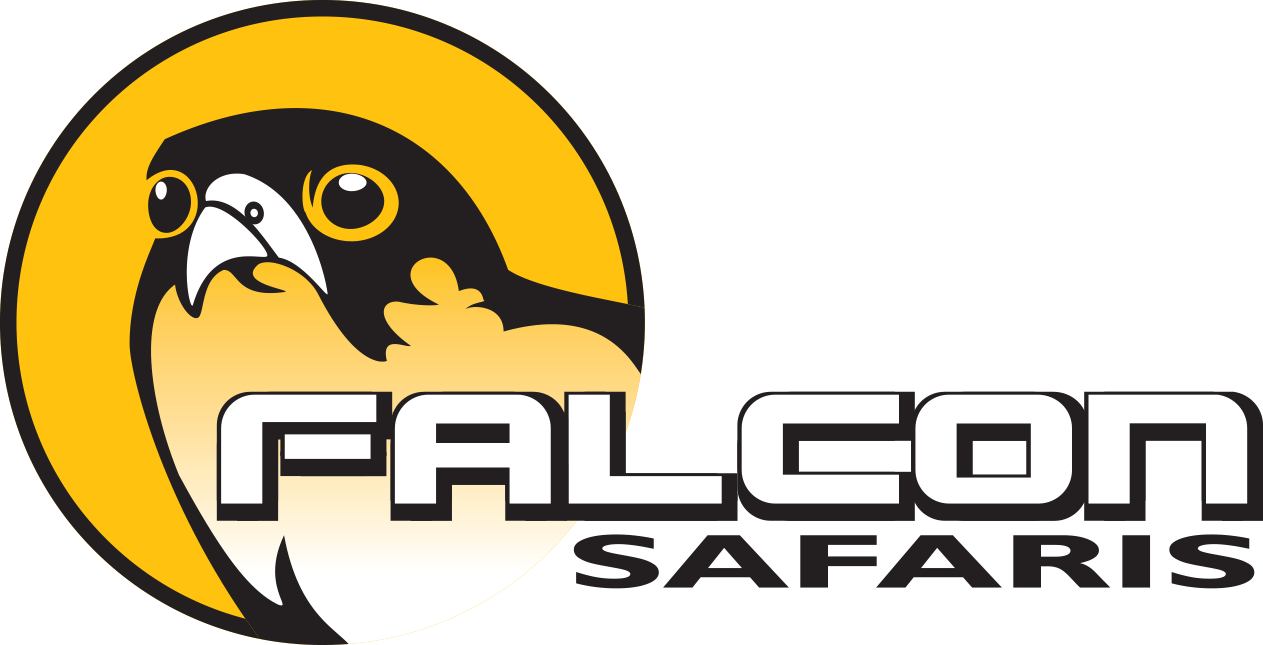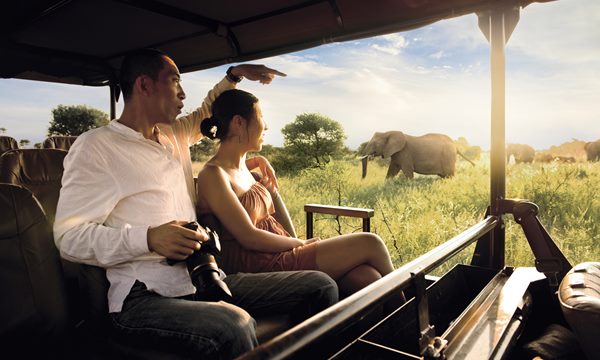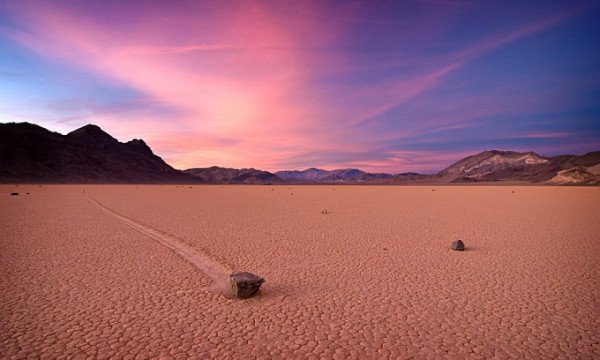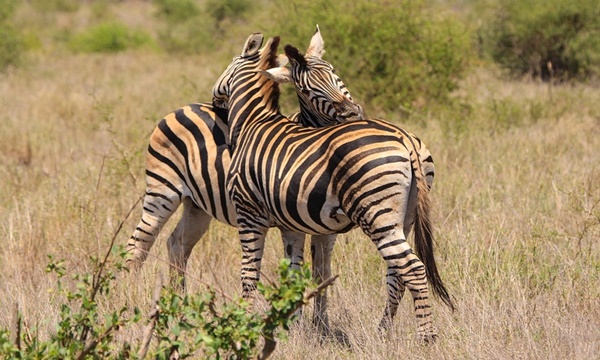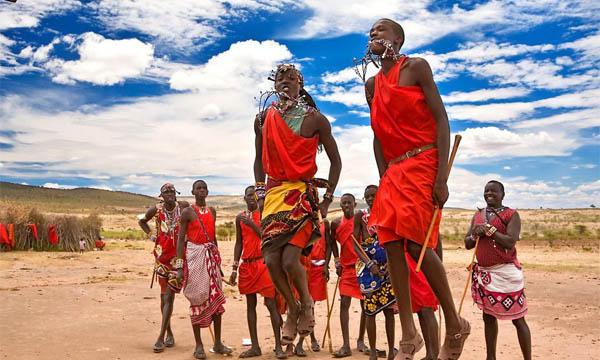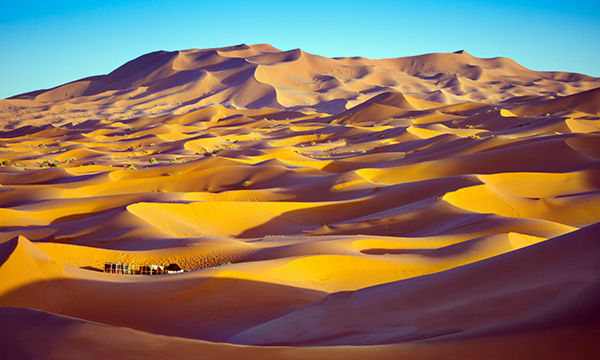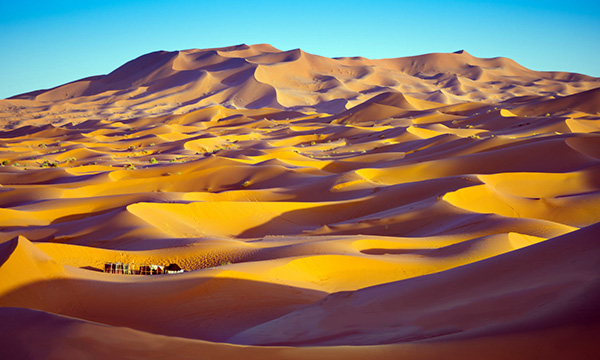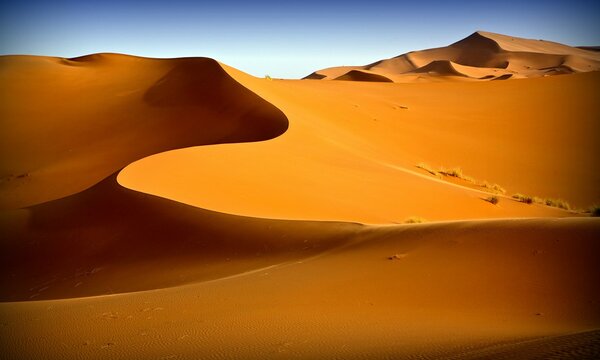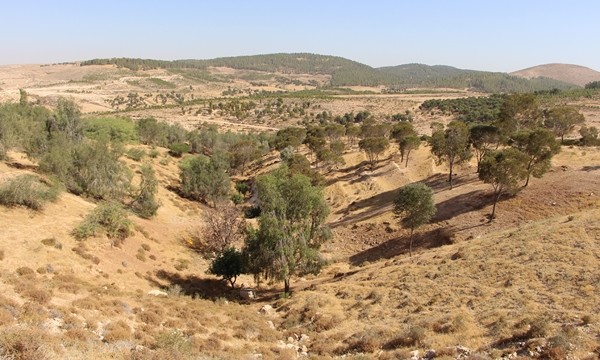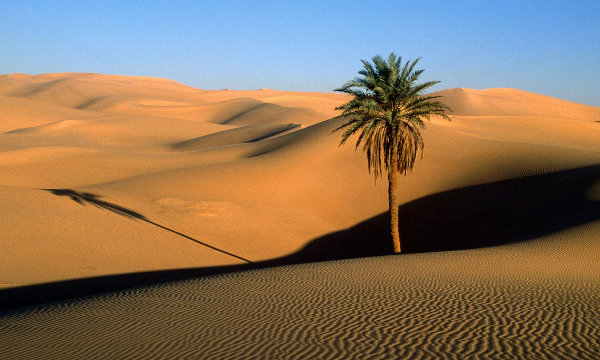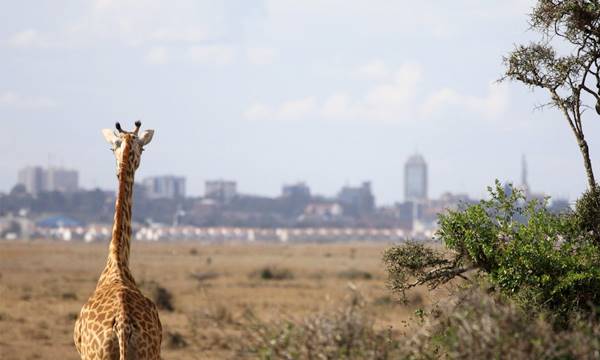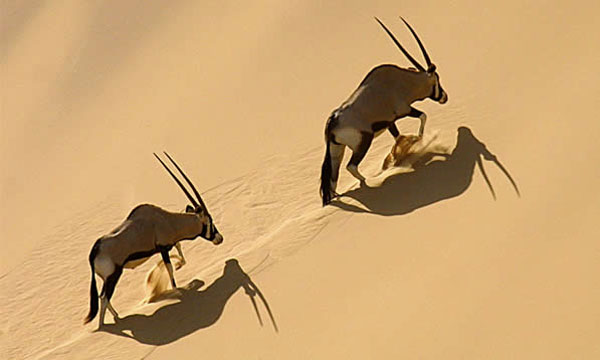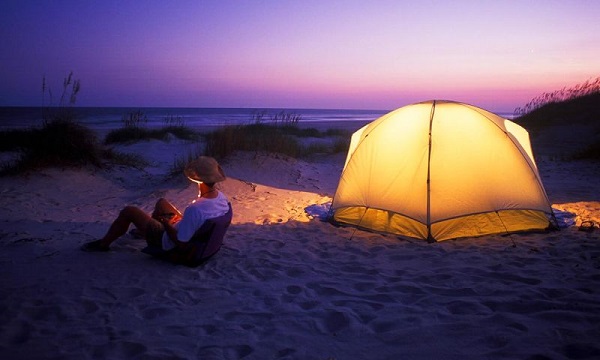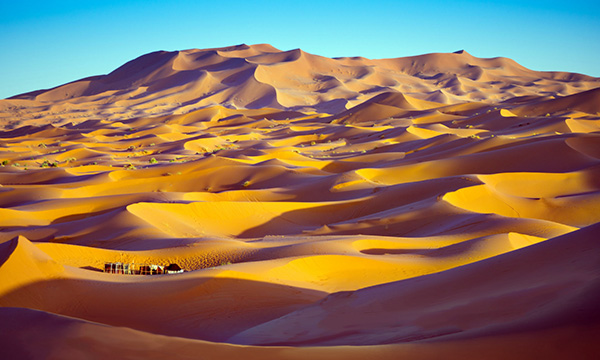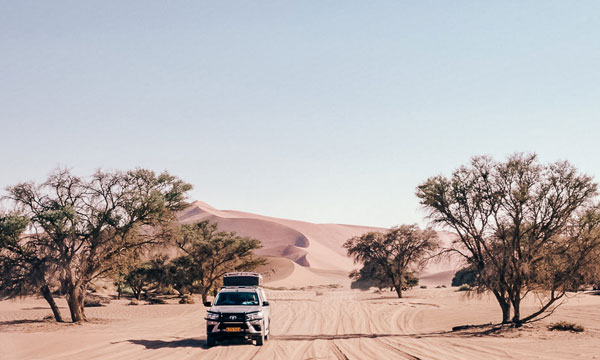Call Us
8:00am - 17:00PM
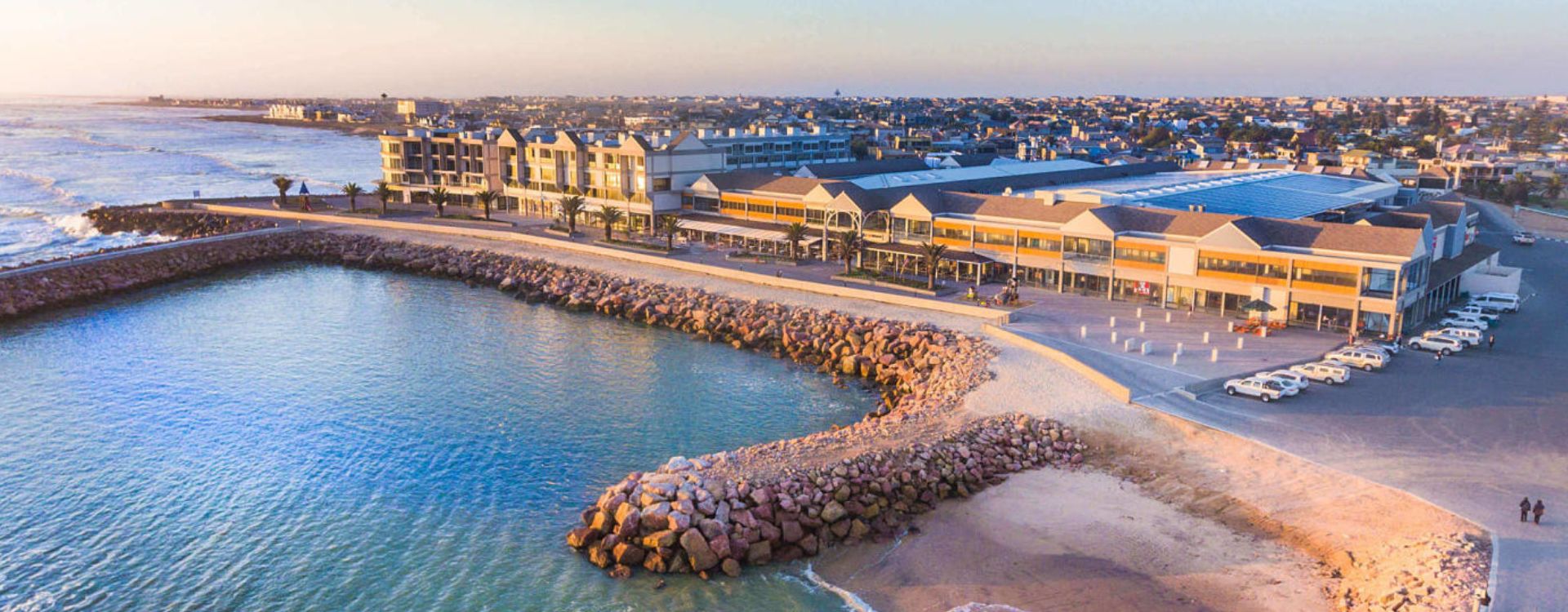
Swakopmund
About Swakopmund
Beautiful beaches, delicious sea foods, and some world-class restaurants make Swakopmund, one of Africa’s premier holiday destinations. Starting with water-sport adventures like surfing and swimming to exploring the city’s German colonial architecture, this city will offer you a lot to discover.
So, why not discover this city on Swakopmund Tours while on your Namibia Safari?
Swakopmund Tours and Safaris
We Think You’ll Love
Best time to visit
The Best Time To Visit Swakopmund is between July and October. During these months, temperatures hover just above 20°C, creating ideal conditions for exploring and Namibia Wildlife viewing. This period marks the peak travel season, especially in August and September when the town buzzes with activity. Planning is key due to high occupancy rates, offering a vibrant experience for those ready to dive into Swakopmund's unique charm.
Wildlife
Swakopmund is a wildlife oasis, bridging the Atlantic's marine life with the Namib Desert's creatures. From the flamingos at Walvis Bay lagoon to desert-dwelling Namaqua chameleons and the playful Cape fur seals, this coastal city offers a peek into diverse habitats. Swakopmund's blend of natural and historical wonders makes it a must-visit for those who cherish both nature and culture.
What To Experience
We think you will love
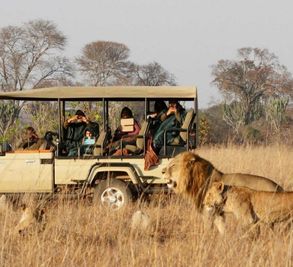
Game Drives
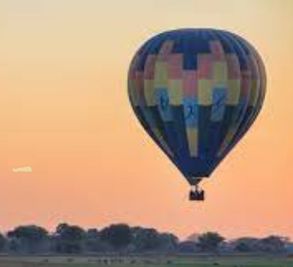
Ballon Safari
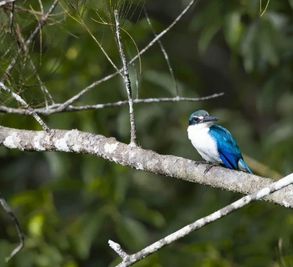
Birding

Walking Safari
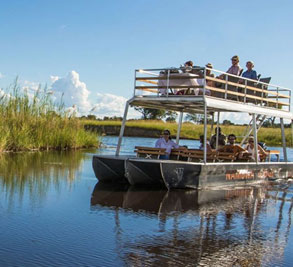
Boating Safari
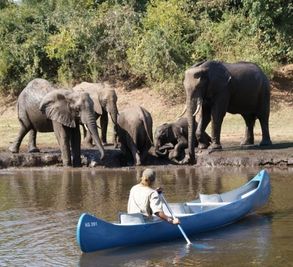
Canoeing
Swakopmund Travel Guide
We Think You’ll Love
Swakopmund Wildlife
Being a resort town, here you can spot dolphins and pelicans and flamingos. Various other sea birds can be spotted here such as Kelp gulls, Hartalaub’s gulls, and cape cormorants. Know more from Namibia Wildlife.
Geology And Climate Of Swakopmund
Swakopmund is located in the Erongo Region on the western coast of the country, bordering the Atlantic Ocean. It is situated about 352 kilometres (219 miles) west of the capital city, Windhoek. The town is located at the mouth of the Swakop River, which flows into the Atlantic Ocean. Swakopmund covers an area of approximately 196 square kilometres (76 square miles) and has a population of around 50,000 people.
The city is characterized by a desert climate, with cool temperatures and low rainfall throughout the year. The surrounding area is dominated by the Namib Desert, which is considered one of the oldest deserts in the world.
History of Swakopmund
Swakopmund was founded by German colonists in 1892 in what was then known as German South West Africa. It quickly became an important port and administrative centre, as well as a popular destination for German tourists. During World War I, the town was captured by South African forces and remained part of South West Africa, which was administered by South Africa under a League of Nations mandate.
Swakopmund continued to develop throughout the 20th century and, after Namibia gained independence from South Africa in 1990, became part of the newly formed Republic of Namibia. Today, the town remains an important centre for tourism, commerce, and administration.
When to visit Swakopmund
Swakopmund is a coastal town in Namibia, known for its German colonial architecture, adventure Things To Do In Namibia, and natural beauty. Here is a month-by-month breakdown of the weather and events in Swakopmund that you should know before coming on Swakopmund Tours.
January-
The weather is hot and dry, with average temperatures ranging from 18°C (64°F) to 26°C (79°F). This is a great time to enjoy water activities like surfing, kayaking, and swimming.
February-
The weather is similar to January, with temperatures slightly increasing towards the end of the month. February is a good time to visit if you want to avoid crowds.
March-
The weather starts to cool down, with average temperatures ranging from 16°C (61°F) to 23°C (73°F). March is a good time for outdoor activities like hiking and exploring the nearby desert.
April-
The weather is mild, with average temperatures ranging from 14°C (57°F) to 21°C (70°F). April is a good time for wildlife sightings and bird watching.
May-
The weather starts to get colder, with average temperatures ranging from 12°C (54°F) to 19°C (66°F). May is a good time for whale watching and dolphin watching.
June-
The weather is cool, with average temperatures ranging from 11°C (52°F) to 17°C (63°F). June is a good time for desert excursions and stargazing.
July-
The weather is cold, with average temperatures ranging from 10°C (50°F) to 16°C (61°F). July is a good time for indoor activities like visiting museums and galleries.
August-
The weather is similar to July, with temperatures starting to increase towards the end of the month. August is a good time for surfing and kiteboarding.
September-
The weather starts to warm up, with average temperatures ranging from 12°C (54°F) to 20°C (68°F). September is a good time for adventure activities like sandboarding and quad biking.
October-
The weather is mild, with average temperatures ranging from 14°C (57°F) to 23°C (73°F). October is a good time for exploring the nearby national parks and wildlife reserves.
November-
The weather starts to get hot and dry, with average temperatures ranging from 16°C (61°F) to 26°C (79°F). November is a good time for water sports and beach activities.
December-
The weather is hot and dry, with average temperatures ranging from 18°C (64°F) to 28°C (82°F). December is a good time for outdoor activities like hiking and camping.
In a nutshell, the Best Time To Visit Swakopmund is May to September, which is the winter season in Swakopmund.
For a quick understanding, take a look at the following table.
|
Month |
Average High Temperature (°C) |
Average Low Temperature (°C) |
Average Rainfall (mm) |
Good for |
|
January |
21 |
16 |
3 |
Surfing, kayaking and swimming |
|
February |
22 |
16 |
4 |
Those who avoid crowds and want to explore this city |
|
March |
21 |
15 |
12 |
Outdoor activities like hiking |
|
April |
19 |
13 |
15 |
Wildlife watching and surfing |
|
May |
18 |
12 |
9 |
Whale watching |
|
June |
16 |
11 |
5 |
Desert excursion and stargazing |
|
July |
15 |
10 |
3 |
Visiting the galleries and museums |
|
August |
15 |
10 |
3 |
Surfing and kiteboarding |
|
September |
16 |
11 |
2 |
Sandboarding and quad biking |
|
October |
18 |
12 |
3 |
Wildlife spotting |
|
November |
19 |
14 |
4 |
Water-sport activities |
|
December |
24 |
14 |
2-5 |
Hiking and camping |
Getting to Swakopmund
Getting to Swakopmund is easy. There are two different ways of getting to this city, one is by air and the other is by road. If you’re planning Swakopmund Tour, we suggest you choose the air option, it’s easy and convenient, especially for international travellers.
By air
The town has its own airport, Swakopmund Airport (SWP), which serves domestic flights from Windhoek and other major cities in Namibia. The closest international airport is Hosea Kutako International Airport (WDH) in Windhoek, which is approximately 350 kilometres (217 miles) away.
By Road
Swakopmund is also connected to the rest of Namibia by a well-maintained network of roads. The B2 highway runs through the town, connecting it to Windhoek and other major cities in the country. There are also regular bus services that operate between Swakopmund and other towns and cities in Namibia.
Wildlife in and around Swakopmund
Swakopmund is located in a desert environment, and while it is not known for its wildlife, there are still some interesting animal species that you can find during your Swakopmund Safaris.
One notable species is the desert-adapted elephant, which can be found in the northern parts of the Namib Desert, including the region around Swakopmund. These elephants have adapted to living in a harsh environment with limited water and food resources.
Other animals that can be found in the region include oryx, springbok, Hartmann's mountain zebra, and the elusive brown hyena. The birdlife in the area is also diverse, with species such as ostriches, flamingos, pelicans, and cormorants being found along the coast.
In addition to the wildlife in the surrounding desert, there are also several nature reserves and parks near Swakopmund where visitors can see a variety of animals.
The nearby Dorob National Park is home to a variety of desert-adapted wildlife, including gemsbok, springbok, and the black-backed jackal. The Cape Cross Seal Reserve, located about 120 kilometres (75 miles) north of Swakopmund, is home to one of the largest breeding colonies of Cape fur seals in the world.
Here is a table for your quick understanding -
|
Wildlife Species |
Description |
|
Desert-adapted elephant |
Found in the northern parts of the Namib Desert, including the region around Swakopmund. These elephants have adapted to living in a harsh environment with limited water and food resources. |
|
Oryx |
A type of antelope that is well-adapted to desert environments, with long, spear-like horns and a distinctive black and white coat. |
|
Springbok |
A small antelope with a reddish-brown coat and white underbelly, known for its distinctive "pronking" behaviour. |
|
Hartmann's mountain zebra |
A subspecies of the mountain zebra, with a distinctive striped coat and a smaller population size than other zebra species. |
|
Brown hyena |
A scavenging carnivore that is well-adapted to desert environments, with a shaggy coat and a reputation for being elusive and difficult to spot. |
|
Various bird species |
The region around Swakopmund is home to a diverse range of birdlife, including ostriches, flamingos, pelicans, and cormorants. |
People and Culture in Swakopmund
Swakopmund is a vibrant coastal city in Namibia that is rich in culture and history. The city's population of approximately 50,000 people is a diverse mix of different ethnic groups, including the Herero, Damara, Nama, and the German community. This cultural diversity is evident in the city's architecture, cuisine, music, and festivals.
The Herero people are one of the largest ethnic groups in Namibia and are known for their colourful traditional attire and strong cultural traditions. The Damara people are known for their unique music and dance, while the Nama people are known for their distinct language and cultural practices. The German community is also a significant cultural influence on the city, with their colonial legacy evident in the city's buildings and cuisine.
Swakopmund is also known for its vibrant arts and music scene. The city hosts several festivals throughout the year, including the Swakopmund Arts Festival and the Namibian Music Awards, which celebrate local artists and musicians as well as showcase international performers.
If you’re on Swakopmund Tours, you can witness the following cultural festivals
Swakopmund Arts Festival
This festival celebrates local art, music, and culture through a series of exhibitions, concerts, and performances. The festival is held annually in August and attracts visitors from all over Namibia and beyond.
Namibian Music Awards
This annual event celebrates Namibia's best musicians and performers across a range of genres. The awards ceremony is a highly anticipated event in the Namibian music scene, with winners selected by a panel of industry experts and fan votes.
Oktoberfest
This festival is a celebration of German culture and tradition, with live music, traditional food and drinks, and a range of cultural activities. The festival is held annually in October and attracts visitors from around the world.
Swakopmund Christmas Market
This festive market is a popular destination for locals and visitors alike during the holiday season. The market features a range of handmade crafts, artisanal foods, and holiday-themed activities and entertainment.
Annual Horse Racing Event
This is a highly anticipated event in the Swakopmund calendar. The annual horse racing event draws thousands of visitors from across Namibia and features a range of activities, including horse racing, live music, and traditional food and drink.
Food in Swakopmund
Visitors on the Swakopmund Day Tour will find that the food in Swakopmund is a unique blend of traditional Namibian cuisine and German influences, reflecting the city's colonial past. Seafood is a popular choice, with fresh fish, lobster, and oysters widely available. Game meat, such as kudu and springbok, is also a common feature on menus.
German-style dishes, such as schnitzel and sausages, are popular options, as are local specialties like kapana (grilled beef) and mopane worms. The city also boasts a range of cafes, bakeries, and coffee shops, serving up a variety of sweet treats and pastries.
Adventures Activities in Swakopmund
With so many adventure activities to choose from, visitors to Swakopmund Tours are sure to find something that suits their interests and adrenaline levels. Here we have mentioned some popular ones
Sandboarding
Swakopmund is surrounded by sand dunes, making it an ideal location for sandboarding. Visitors can experience the thrill of sliding down the dunes on a sandboard, with several companies offering guided tours and equipment rental.
Skydiving
Swakopmund is known as one of the best locations in the world for skydiving, with its stunning coastal scenery and clear skies providing the perfect backdrop for a thrilling jump.
Quad biking
Quad biking is a popular way to explore the desert landscapes around Swakopmund. Guided tours take visitors on a thrilling ride over the sand dunes and through the rugged terrain.
Kayaking and boat tours
Visitors can explore the coastal waters of Swakopmund by taking a kayak tour or a boat ride. These tours offer the chance to see dolphins, seals, and other marine life up close.
Camel riding
Camel riding is a unique way to experience the desert landscapes around Swakopmund. Guided tours take visitors on a leisurely ride through the sand dunes, providing a peaceful and scenic experience.
Scuba diving
Swakopmund is home to several shipwrecks, making it a popular location for scuba diving. Divers can explore the wrecks and see a variety of marine life, including sharks, rays, and colorful fish.
Fishing
The coastal waters of Swakopmund are home to a variety of fish, including kabeljou, yellowtail, and snoek. Visitors can go on fishing tours to try their luck and catch their own fish.
Hiking and walking tours
Visitors can explore the natural beauty of Swakopmund on foot by taking hiking or walking tours. Guided tours take visitors through the sand dunes, along the beach, and through the city's historic neighborhoods.
Paragliding
Paragliding is another thrilling adventure activity that visitors can enjoy in Swakopmund. The city's coastal location and unique landscape make it a perfect location for paragliding.
Horse riding
Horse riding tours take visitors through the desert landscapes around Swakopmund, providing a peaceful and scenic experience. Some tours also offer the chance to see wildlife, such as zebras and oryx.
Here's a table summarizing the adventure activities in Swakopmund
|
Activity |
Description |
|
Sandboarding |
Sliding down sand dunes on a board |
|
Skydiving |
Jumping from a plane and free-falling with a parachute |
|
Quad biking |
Riding all-terrain vehicles through the desert |
|
Kayaking/Boat |
Tours Exploring the coastal waters, seeing dolphins and seals up close |
|
Camel riding |
Riding camels through the dunes |
|
Scuba diving |
Exploring shipwrecks and seeing marine life underwater |
|
Fishing |
Catching fish in the coastal waters |
|
Hiking/Walking |
Exploring the natural beauty of Swakopmund on foot with a guide |
|
Paragliding |
Gliding through the air with a parachute and taking in the coastal views |
|
Horse riding |
Riding horses through the desert landscapes, sometimes seeing wildlife like zebras and oryx |
Attractions in and Around Swakopmund
Swakopmund is a beautiful coastal town, around this city there are many places you can visit during Swakopmund Tour. Below, we have mentioned some of the most visited attractions-
Swakopmund Museum
The Swakopmund Museum displays the history of the town, including the Namibian culture, the German colonial area, end the natural history of the region. This museum was founded in 1651 by Dr. Alfons Weber.
Swakopmund Jetty
Swakopmund Jetty is a great place to visit on your Swakopmund Tours. Here you can go for fishing and a sublime view of the Atlantic Ocean. Swakopmund Jetty was constructed between 1904 and 1905.
Kristall Galerie
Kristall Galerie was founded in 1998 and it’s a museum of crystals and gemstones that showcase unique specimens from Namibia and other parts of the world.
Things to Do in Swakopmund
Being known for its stunning beaches, and German colonial architecture, Things To Do In Namibia, here’re are some of them -
Camel ride
Visitors to Swakopmund Safari can go on a camel ride along the beach or in the desert dunes near Swakopmund. The cost of a camel ride in Swakopmund is $150 for 20 minutes.
Living Desert Tour
A unique guided tour that takes visitors to explore the desert and its diverse flora and fauna including chameleons, geckos, and other creatures that have adapted to survive in such harsh conditions.
Dolphins and Sea Cruise
Visitors can explore the desert dunes on a quad bike, a thrilling adventure that offers spectacular views of the landscape.
Go for shopping
Swakopmund has many local shops and markets where visitors can buy souvenirs, jewellery, and traditional crafts.
Visit the Lighthous
The Swakopmund Lighthouse is a landmark of the town. From the top, you can observe how beautiful this coastal city looks.
Explore the Skeleton coast
The Skeleton Coast is known for its shipwrecks and eerie landscapes. You can take a scenic flight or drive along this coast.
Go on a quad-biking adventure
Visitors can explore the sand dunes and desert landscapes on a quad biking tour.
Taste the traditional Namibian Food
Swakopmund has a variety of restaurants serving traditional Namibian Cuisine such as game meat and seafood.
Where to Stay in Swakopmund
Swakopmund offers a wide range of accommodation options from luxury guest houses to affordable lodges and hotels. You can choose to stay in the following hotel and lodges while on your Tours in Swakopmund.
Egumbo Lodge
Visitors looking for luxury accommodation can stay in the Egnumbo Lodge. This lodge features exclusive accommodation in 9 rooms. Each room has a flat-screen television and espresso coffee machines.
Hansa Hotel
Hansa Hotel in Swakopmund offers you the finest and most luxurious accommodations in five different rooms for suites and 49 twin rooms. This hotel has also 2 restaurants and a main dining room.
Swakopmund Hotel and Entertainment Centre
Swakopmund Hotel and Entertainment Centre offer 90 stylish rooms with en-suite bathrooms, a variety of dining options, a fitness center and a casino.
Here, visitors can enjoy activities like dune boarding, quad biking, and dolphins’ cruises.
Hotel Eberwein
Hotel Eberwein features 17 rooms with tv, minibars, and underfloor heating. Each room has en-suite bathrooms and a garden courtyard.
Where to Stay in Swakopmund
Swakopmund offers a wide range of accommodation options from luxury guest houses to affordable lodges and hotels. You can choose to stay in the following hotel and lodges while on your Tours in Swakopmund.
Egumbo Lodge
Visitors looking for luxury accommodation can stay in the Egnumbo Lodge. This lodge features exclusive accommodation in 9 rooms. Each room has a flat-screen television and espresso coffee machines.
Hansa Hotel
Hansa Hotel in Swakopmund offers you the finest and most luxurious accommodations in five different rooms for suites and 49 twin rooms. This hotel has also 2 restaurants and a main dining room.
Swakopmund Hotel and Entertainment Centre
Swakopmund Hotel and Entertainment Centre offer 90 stylish rooms with en-suite bathrooms, a variety of dining options, a fitness center and a casino.
Here, visitors can enjoy activities like dune boarding, quad biking, and dolphins’ cruises.
Hotel Eberwein
Hotel Eberwein features 17 rooms with tv, minibars, and underfloor heating. Each room has en-suite bathrooms and a garden courtyard.
Where to Stay in Swakopmund
Swakopmund offers a wide range of accommodation options from luxury guest houses to affordable lodges and hotels. You can choose to stay in the following hotel and lodges while on your Tours in Swakopmund.
Egumbo Lodge
Visitors looking for luxury accommodation can stay in the Egnumbo Lodge. This lodge features exclusive accommodation in 9 rooms. Each room has a flat-screen television and espresso coffee machines.
Hansa Hotel
Hansa Hotel in Swakopmund offers you the finest and most luxurious accommodations in five different rooms for suites and 49 twin rooms. This hotel has also 2 restaurants and a main dining room.
Swakopmund Hotel and Entertainment Centre
Swakopmund Hotel and Entertainment Centre offer 90 stylish rooms with en-suite bathrooms, a variety of dining options, a fitness center and a casino.
Here, visitors can enjoy activities like dune boarding, quad biking, and dolphins’ cruises.
Hotel Eberwein
Hotel Eberwein features 17 rooms with tv, minibars, and underfloor heating. Each room has en-suite bathrooms and a garden courtyard.
Comprehensive Travel Requirements For Swakopmund
If you are planning your next Tours in Swakopmund, here are some comprehensive Namibia Travel Requirements you should keep in mind:
- Passport: You must have a valid passport to enter Namibia. Your passport must be valid for at least six months from the date of entry into the country.
- Visa: Depending on your nationality, you may need a visa to enter Namibia. Some countries are exempt from visa requirements, while others can obtain a visa on arrival or must apply for a visa in advance.
- Vaccinations: There are no mandatory vaccinations required to enter Namibia, but it is recommended that you have up-to-date vaccinations for hepatitis A and B, typhoid, and yellow fever. Depending on your travel plans and activities, other vaccinations or preventative measures may be recommended.
- Travel Insurance: It is recommended that you purchase travel insurance that covers medical expenses, trip cancellation or interruption, and other unforeseen circumstances that may arise during your trip.
- Currency: The currency in Namibia is the Namibian dollar (NAD), but the South African rand (ZAR) is also widely accepted. You can exchange currency at banks or bureaus de change in Swakopmund.
- Climate: Swakopmund has a mild desert climate, with cool temperatures year-round. The best time to visit is from March to November when the weather is cooler and drier.
- Transportation: Swakopmund has a small airport that serves domestic flights, but most travellers arrive by car or bus from Windhoek or other cities in Namibia. There are also taxis and car rental options available in Swakopmund.
- Accommodation: Swakopmund has a variety of accommodation options, including hotels, guesthouses, and campsites. Be sure to book your accommodation in advance, especially during peak travel seasons.
- Safety: Swakopmund is a safe and friendly town, but it is still important to take basic safety precautions, such as not leaving valuables unattended and avoiding walking alone at night.
Final Words on Swakopmund
Swakopmund is worth visiting, this coastal town has everything that you expect from a beach holiday destination. Whether you relax on its pristine beaches or take a stroll around its historic colonial building, or just enjoy surfing in the Atlantic Ocean, you will be overwhelmed by seeing what the city truly offers. If you’re planning where to spend your next holiday, then think about Swakopmund. And, if you’re already on Namibia Safaris, make some days for this city too, besides exploring other destinations.
To know more about, Swakopmund Tours, stay in touch with our guides.
best month to Visit Swakopmund
We Think You’ll Love
Peak
Low
Mixed
Swakopmund in January
January's warm weather, with temperatures ranging from 55℉ to 82℉ and a humidity of 73%, makes it an excellent time for Swakopmund Tours. The city invites exploration with its sultry days, perfect for enjoying the myriad of activities Swakopmund has to offer.
Swakopmund in February
In February, Swakopmund greets visitors with temperatures up to 81℉ and a moderate humidity of 74%. This month is fantastic for venturing into the city's cafes and experiencing Namibia Tours under the comforting warmth of the sun.
Swakopmund in March
March in Swakopmund sees temperatures fluctuating between 50℉ and 108℉, with an average humidity of 64%. This slightly uncomfortable but exciting weather is perfect for sightseeing around Swakopmund, offering a unique blend of warmth and adventure.
Swakopmund in April
April continues with the trend of March, offering ideal weather for exploring Swakopmund's attractions. The temperature and humidity levels provide a comfortable backdrop for experiencing the city's vibrant culture and natural beauty.
Swakopmund in May
May brings sunny weather with temperatures between 46℉ and 99℉, averaging at 71℉. It's the Best Time To Visit Swakopmund, with weather that won't hinder travel or cause discomfort as you explore the stunning locales of the city.
Swakopmund in June
June introduces slightly humid air with an average temperature of 60℉, making it a perfect time for Namibia Safaris. The weather is balmy, ideal for enjoying Swakopmund's outdoor activities without the extreme heat or cold.
Swakopmund in July
July's weather in Swakopmund remains similar to June's, with comfortable temperatures for outdoor exploration. The mild climate and minimal precipitation make it an excellent season for visitors looking to enjoy the city and its surroundings.
Swakopmund in August
August marks an excellent season to visit Swakopmund, with average temperatures around 58℉. The weather is great for the outdoors, encouraging tourists to indulge in the city's numerous attractions and activities.
Swakopmund in September
September in Swakopmund sees moderately humid air and an average temperature of 58℉, continuing the pleasant conditions for visitors. This month is among the best times to visit, aligning perfectly with the tourist high season.
Swakopmund in October
October's climate in Swakopmund, with an average temperature of 63℉ and slight humidity, offers balmy weather ideal for exploration. This period is perfect for enjoying the diverse experiences the city has to offer.
Swakopmund in November
November maintains the comfortable climate of October, with average temperatures of 63℉ and a slight humidity, making it another great month for visiting Swakopmund and engaging in its rich array of activities.
Swakopmund in December
December in Swakopmund brings temperatures up to 95℉, with an average of 63℉ and mild humidity. This season is ideal for visitors looking to experience the city's festive atmosphere and warm, welcoming weather.
Frequently Asked Questions
We Think You’ll Love
Swakopmund is known for Swakopmund Museum, National Marine Aquarium, and crystal gallery. This city is also known as the finest resort town in Namibia.
German, African, and English, are three languages spoken in Swakopmund.
Swakopmund is a coastal town in Namibia, located on the Atlantic Ocean. It is a popular tourist destination due to its scenic beauty, German colonial architecture, and outdoor activities.
The Best Time To Visit Swakopmund is during the months of May to September, which is the winter season in Namibia. The weather during this time is cool and dry, making it perfect for outdoor activities.
Some popular things to do in Swakopmund include sandboarding on the dunes, taking a scenic flight over the Namib Desert, exploring the town's historic German architecture, and visiting the Swakopmund Museum.
Swakopmund has its airport, the Swakopmund Airport, which receives domestic flights from Windhoek and other cities in Namibia. It is also possible to drive to Swakopmund from Windhoek, which takes around four hours. Buses and taxis are also available for transportation.
We are thrilled to help you plan your perfect safari holiday
We'd be delighted to help you with any questions you have about properties & safaris. Please fill in the form below so that we can help you create your perfect safari holiday.
Or
Contact Us
Feel free to give us a call or send us an e-mail:
Start Planning Your Tailored African Safari

Expert Safari Knowledge
With decades of expertise, we're your trusted safari guides, ensuring every moment exceeds your expectations.

Tailor-made African Safaris
Tailored to your preferences, our African Safaris guarantee an adventure perfectly suited to your desires.

Long-term Relationships
Our enduring partnerships across Africa provide exclusive access and authentic experiences.

Carefree Travel
Leave your worries behind and accept carefree travel with Falcon Safaris, where every detail is handled to perfection.
Our Travelers Say

We travelled with Falcon Safaris in Zimbabwe and Botswana for 16 days. Falcon designed a wonderful trip with private guide to the most interesting sites in both countries. The organization of the whole trip was excellent, flights within the country, accommodation and activites. The guides were very knowledgable and told us a lot about the countries, their history, people, economy and much more. We visited the Great Zimbabwe Ruins, the Victoria Falls Tour and a number of national parks in both countries.
Rhino tracking was a real adventure! We had tremendous further game drives and saw very many animals - we did the Big Five. We had much more Victoria Falls Activities than planned and enjoyed very much.We strongly recommend Falcon Safaris to everyone planning a trip to Southern Africa and East Africa.
Wonderful trip to Zimbabwe and Botswana with excellent organization and very competent guides

Our Consultant Vimbai was very helpful and accommodating. We stayed at the Elephant hills hotel which was nothing short of amazing.Our activities included a helicopter flight, dinner cruise as well as a morning game drive. All the activities were absolutely amazing.
Exceptional!

We worked with Gertrude to schedule and organize everything and she did an excellent job. I asked a lot of questions via e-mail and she answered everyone in a timely helpful manner. Our guide at Victoria Falls was also great. He met us at the airport, provided a thoughtful tour of the Falls and got us to our next guide in Botswana. Our lodgings at River View Lodge were just as described- very comfortable and excellent food. All the staff were so pleasant and helpful. If I had to do it again I would arrange a morning boat ride as well. We only did the sunset boat rides and they were the high point of our entire trip- we saw so many animals and our guide was very knowledgeable. Just a great experience. Our lodgings at Oddball's Enclave was rustic and we loved it. So great to disconnect from the world for a bit. Leo, our guide, was the best - got us out and about, saw fantastic wildlife and got back to camp safely each time. Doc manages the camp so well. This whole trip was planned and organized by Falcon Safaris and we could not have been happier.
Fabulous, well planned trip

Falcon safaris have given my the correct advice with excellent service. The only suggestion will be to work closer with the lodges to confirm bookings as soon as possible. We have booked and pay our deposit a year in advance. We have only receive our final convermation from Chobe Safari lodge a week before departure. I do realize its not within your controle but with limit alternatives and a group of 14 people it becomes an issue to find alternative accomodation if the booking was cancelled.
Excellent and efficient service
Explore Our Africa With Customize Your Tour
We love Africa's diversity and create amazing trips for you. With 30+ years of experience, we customize every trip just for you.
